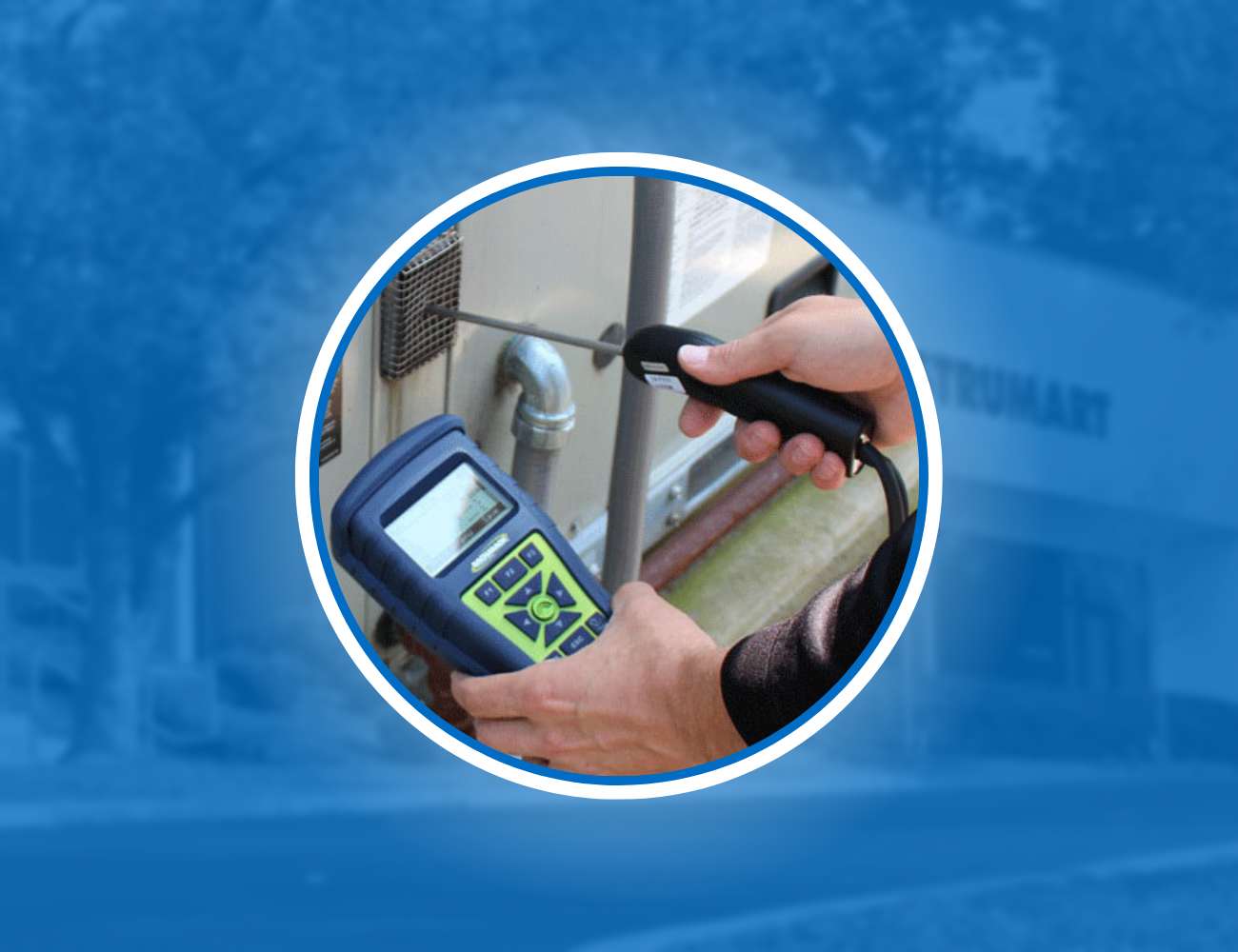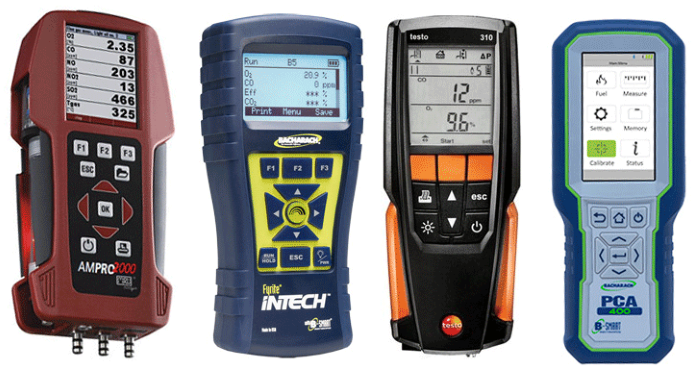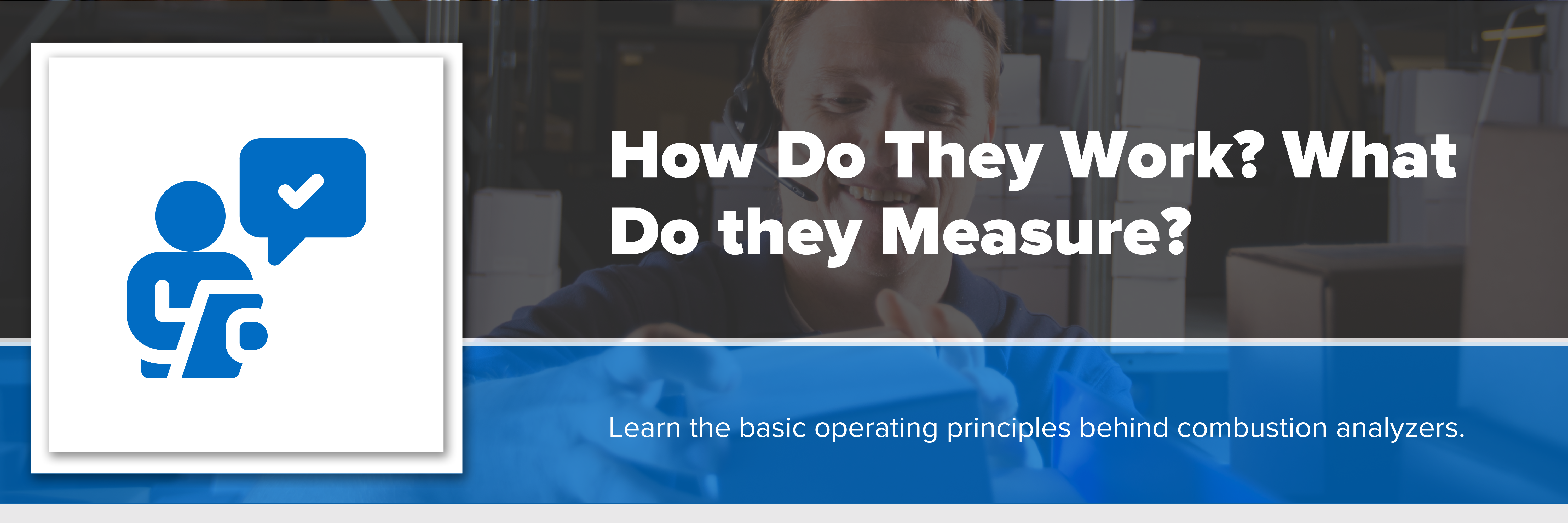So You Think You Need A Combustion Analyzer

All You Ever Wanted to Know About Combustion Analyzers... and More!

Combustion analyzers are special purpose instruments designed to measure the gases in a combustion process to ensure safety and maximum efficiency. The two most common parameters related to combustion are CO (Carbon Monoxide) and O2 (Oxygen.) All types of boilers, heaters, and furnaces can benefit from proper combustion analysis and adjustment. Through the analysis of key parameters, it's possible to improve combustion efficiency resulting in lower fuel costs, fewer pollutants being emitted, and general occupant safety.
Combustion occurs when fuel, generally a fossil fuel, reacts with oxygen to produce heat. When combustion is harnessed to provide usable heat, the objective is to burn the fuel as completely as possible with the least amount of loss. Combustion analyzers can find the ideal fuel-to-air ratio for each application so as to come as close as possible to complete combustion. Too much oxygen creates wasted energy while too little oxygen and is dangerous.

Who Needs A Combustion Analyzer?
Combustion analyzers are ideal for setting up and commissioning complex multi-stage, or modulating heating systems, as well as basic testing and tuning of all types of boilers, heaters or furnaces. Though anyone with a heater, boiler, kiln or furnace can benefit, combustion analyzers are most useful for HVAC professionals or technicians in larger facilities subject to high fuel costs and EPA regulations which set specific standards for certain emissions that are harmful to the environment.

How Do Combustion Analyzers Work? What Do They Measure?
Since improving combustion can be simplified to burning fuel completely and minimizing harmful emissions, combustion analyzers use an array of sensors, usually packaged in a portable instrument for use in the field, that quickly and accurately provide the information required to improve combustion. An attached probe permits easy insertion into the exhaust where measurements are made.
Most combustion analyzers include thermocouples, pressure sensors, an O2 sensor, and a CO sensor. The included sensors may vary based on model type. In addition, since different fuels have different characteristics when analyzed, most models include pre-set fuel profiles.
The sensors included in combustion analyzers provide a number of direct measurements as well as the ability to calculate other rates.
Oxygen (O2): When oxygen appears in flue gas it's a sign that more air was supplied than necessary for combustion.
Carbon monoxide (CO): Carbon monoxide in the exhaust gas is a sign of incomplete combustion due to inadequate air supply. Ample oxygen will combine with CO to produce CO2.
Inlet Temperature: Inlet temperatures indicate the amount of heat entering the system by supply air. When determining heat loss, inlet temperatures are compared to flue temperatures providing net heating information.
Flue Temperature: High flue temperatures reveal heat loss. While some heat loss is unavoidable, the lost heat is a major cause of lower fuel efficiency.
Draft: Draft is the rate at which exhaust gas is vented away as measured by pressure sensors. Excessive draft can prevent heat transfer to the system while inadequate draft allows water vapor and harmful gases to accumulate.
Efficiency: Combustion efficiency is a calculated measurement of how effectively fuel is converted into heat.
Carbon dioxide (CO2: Carbon dioxide values are calculated from O2 and CO measurements. CO2 along with water vapor, should be the only gases present if combustion is stoichiometric.
Excess Air: A calculated value of the amount of air above what is required for complete combustion. Too much excess air can absorb heat resulting in lower system efficiency.
In addition to the sensors included within the instrument, combustion analyzers often include a number of additional features designed to improve the user experience or to increase the versatility of the instrument. Some types of additional features include printers, data loggers, communications, toxic gas sensors, and others.

How Do I Decide Which Combustion Analyzer is Right for Me?
We have created a Combustion Application Advisor as a resource for you to submit information regarding your combustion application. Shortly after submitting, one of our applications engineers will be in touch.
- Which parameters do you need to measure?
- Which fuel is being used?
- Do you need communications to send information to a computer or other device?
- Do you need to print or data log the measurements?
- Which accessories (probes, hoses, sensors, software, etc.) do you need?

Still Need Help? Call an Engineer Today.
If this post still leaves you wondering what type of industrial instrumentation would work best for your application, our engineers would be happy to help you. Give them a call at 1-800-884-4967. Or, you can shop for a wide range of industrial instrumentation from top brands and even configure your product online. We offer free lifetime tech support with every product sold.









